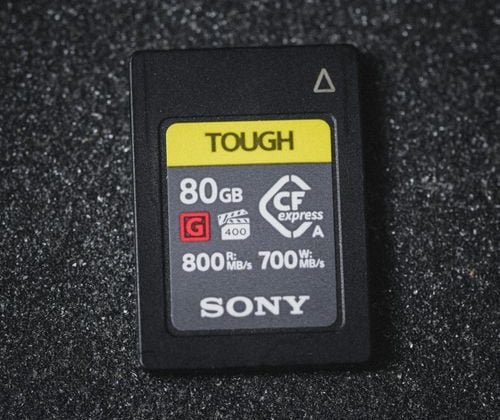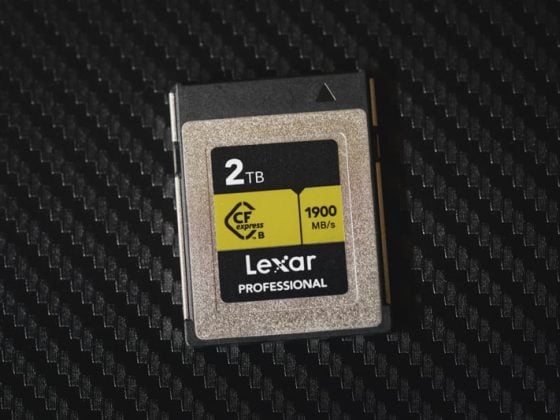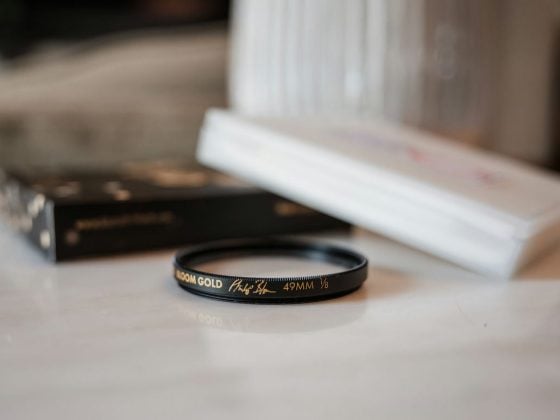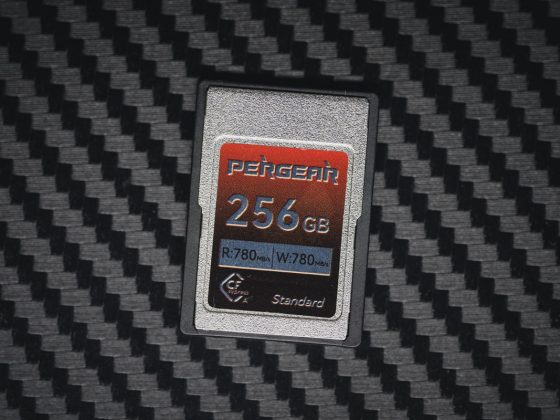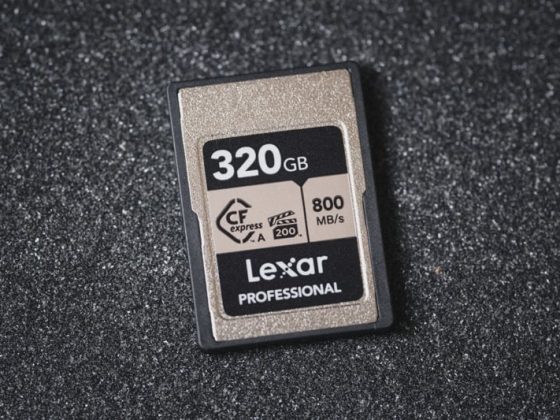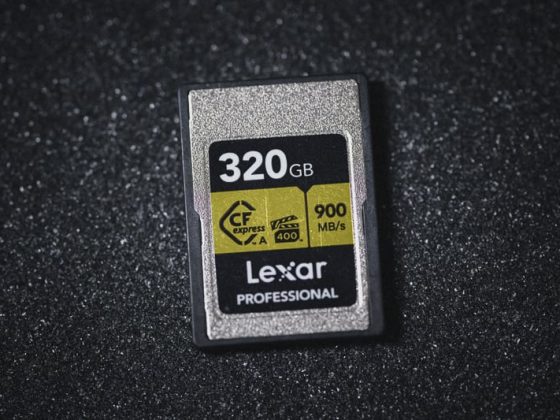The Sony G Tough CFExpress Type-A memory card is a powerhouse for professionals who need to capture high-resolution photos and videos in Sony cameras. The ‘TOUGH’ designation isn’t just a marketing term; it’s a promise of resilience. The card is designed to be waterproof, dustproof, and shock-resistant, ensuring your data is protected even in the most challenging environments.
There are now two different performance sets based on the size of the cards you buy.
The Sony Tough M, and the Sony Tough G. The only difference is the rated sustain speeds.
Sony G Tough 80/160/320/640GB: Have a VPG 400 Rating – More on that later.
Sony M Tough 960/1920GB: Have a VGP 200 Rating.
Rated Speeds
Speed is where the Sony 80GB CFexpress Type A card truly shines compared to SD UHS-II V90 cards standard in most Sony cameras. With rated read speeds of up to 800 MB/s and rate write speeds of up to 700 MB/s, this performance means photographers and videographers can confidently work with high bitrate video and fast buffer clearing.
VPG 400: Consistency Guaranteed
The G class cards in the range from 80GB – 640GB meet the Video Performance Guarantee 400 (VPG 400) spec, which ensures that the write speeds will not drop below 400 MB/s. This feature is crucial for uninterrupted video recording, particularly when dealing with high-bitrate codecs.
The M cards in the range of 960GB – 1920GB meet the Video Performance Guarantee 200 (VPG 200) spec.
USB-C Testing: Real-World Performance
To check for USB-C performance I used the Lexar CFe Type-A + UHS-II reader. I also have a Prograde reader but haven’t seen much of a difference in performance between the two, a few MB/s difference is all is all.
The Software I use is AJA System Test in Windows 11 plugged into a USB 3.2 2×2 port using a USB-C cable that can handle 20Gbps. Although, this is not a 20Gbps reader.
The results came back just decent compared to the other brands. I saw a write speed of 658 MB/s and read speed of 847 MB/s,
By comparison, Lexar Gold came back with a Write Speed of 825MB/s and even the Lexar Silver hit 776MB/s. You can see more details on this comparison in my CFexpress Type-A memory Card List.
The 80GB card I tested was from their first production run; maybe newer cards are faster.
| Card Name | USB-C Write | USB-C Read | Sustain Write | Heat Write |
| Sony G TOUGH CFeA – 80GB | 658 MB/s | 847 MB/s | 276 MB/s | 173 MB/s |
Testing USB-C Sustain Speeds
I’m not getting these ratings, if I push this card I can bring its sustained write speeds down to 173 MB/s even on the 80GB card.
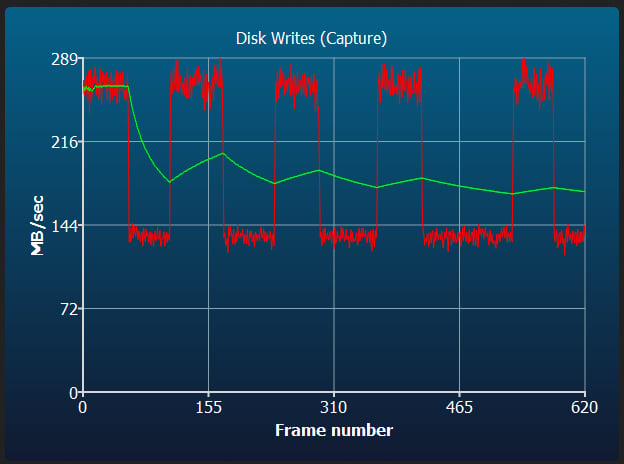
To be fair, I’m testing an 80GB card and pushing 256GB to it with continuous write cycles. So filling the 80GB card would never get hot enough to throttle that much, however, they offer these cards in much larger sizes.
When I pushed 128GBs to this card I only saw it throttle down to 273Mb/s. So the flash may be configured a little differently with the larger capacity cards. Typically they use more SLC fast type flash as you scale up the capacity, and this possibly could improve performance for matching the size of the card. So I won’t get too critical until I can test the higher-capacity cards.
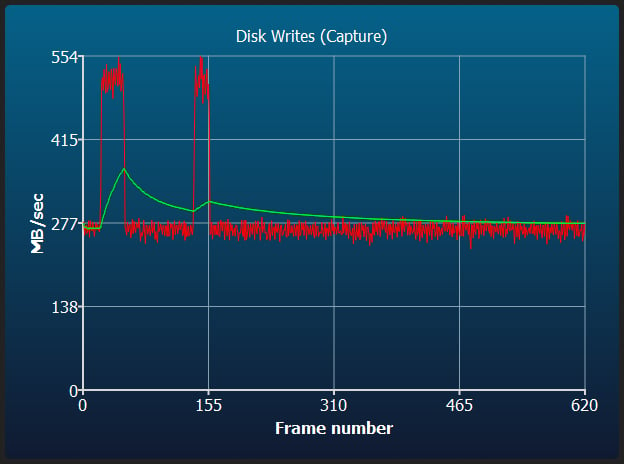
Meanwhile, I could not get the budget Lexar Silver CFexpress Type-A card to slow down much at all and the Lexar cards have been pretty much outperforming the Sony CFexpress Type-A and Type-B cards in every metric. I’m not sure what Sony is missing here or what magic Lexar has.
A normal sustain writing 64GB to the card without any heat load runs at close to normal speeds until about 32GB of data is written then we get a big drop in performance.

In-Camera Testing: Real-World Performance
I have tested this card in many of the Sony cameras, and it does very well.
When testing for The Best Memory Cards For Sony A1, we hit speeds of 611 MB/s
When testing for The Best Memory Cards For Sony A7rV, we hit speeds of 594 MB/s
When testing for The Best Memory Cards For Sony A7IV, we hit speeds of 325 MB/s
Why is this important?
This is important because even with CFexpress Type-A we’re getting similar speeds to what we see in the Nikon Z8 Memory Card Buffer Tests which is great for photographers that do a lot of bursting. The only downside is that we are not where close to the sustain speeds we are seeing from CFexpress Type-B cards. For example, the Nikon Z8 and many of the CFeB cards can easily handle the 722MB/s required for NRAW.
Hopefully, future iterations of CFeA get us there, Lexar is getting close. Possibly CFX-A 4.0 will be the next upgrade that can get Sony cameras to high-bitrate RAW video if the small form factor can handle the heat.
Key Takeaways
The Sony CFexpress Type A TOUGH Memory Card is a robust storage solution that doesn’t compromise on speed or capacity. It’s an excellent choice for professionals who demand the best from their equipment and need the assurance that their memory card is as tough as the conditions they work in.
While some other brands are showing better results, Sony cards are still reliable, and tough and work well in Sony cameras.

